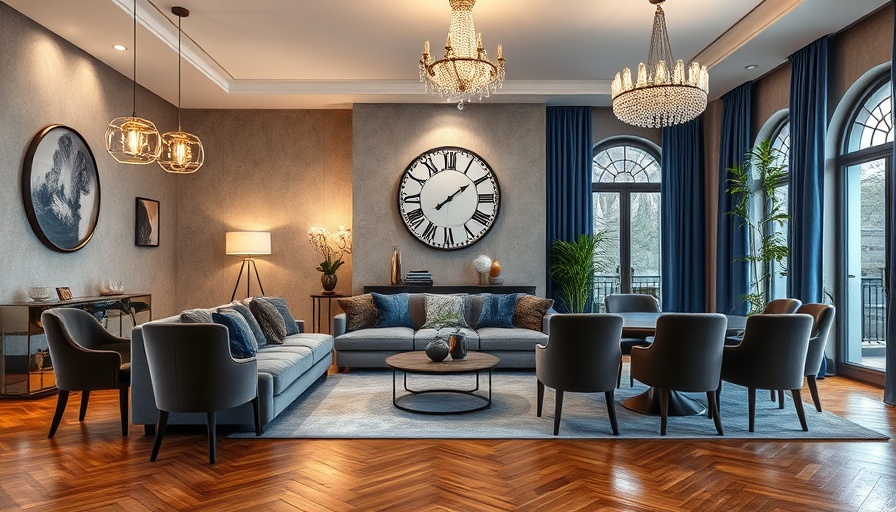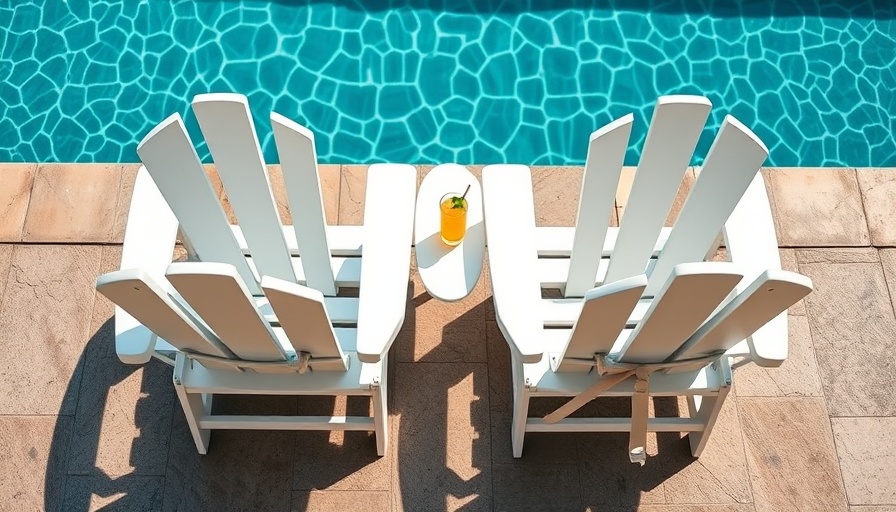
Understanding Luxury Design and Its Nuances
Luxury design touches on more than just opulence; it hinges on intentionality and balance. To truly appreciate luxury, it's crucial to recognize that it involves emotional resonance as much as the price tag of materials. The impression of wealth can be diminished if spaces come across as chaotic or overstuffed with extravagant pieces. Instead, achieving a luxurious atmosphere requires thoughtful consideration of layout, mood, and material choices.
Five Common Mistakes in Luxury Design
Let’s delve into five typical missteps that can strip luxury spaces of their intended warmth and refinement:
1. Prioritizing Statement Pieces Over Spatial Flow
A frequent error in luxury design is the emphasis on standout statement pieces at the expense of spatial flow. When every item in a room competes for attention, it can create a disjointed feel. Luxury thrives in clarity; each element should support the others, creating a harmonious rhythm. For instance, proper spatial arrangement can enhance movement, making rooms feel inviting and interactive. High-end architecture firms often focus on designing spaces with seamless transitions that encourage engagement.
2. Avoiding Material Overload in Favor of Harmonious Simplicity
Another mistake is an overindulgence in materials. While high-quality materials can enhance aesthetics, a cluttered assortment leads to chaos. Instead, a more efficient approach is to select a few harmonious materials that elevate sophistication. With fewer elements to distract, each remaining piece gains significance and allows its quality to shine through. This approach aligns with a minimalist philosophy—the focus should be on texture and tone harmonizing rather than juxtaposed in competition.
3. Neglecting the Connection Between Indoor and Outdoor Spaces
Often, outdoor areas become neglected in the grand scheme of interior luxury. Thoughtfully integrating these spaces can amplify overall design. This continuity creates a sense of flow, expanding the boundaries of living spaces and reinforcing cohesiveness. Designers typically channel outdoor aesthetics into their interiors—using views as focal points and allowing natural light to influence indoor color palettes. Such integration not only enhances luxury but also contributes to an idyllic living environment, inviting nature indoors.
4. Ignoring the Importance of Lighting
Overlooking lighting can be detrimental to luxury spaces. Beyond mere illumination, lighting plays a role in mood creation. Layered lighting effectively brings life to a room. Incorporating different sources—such as ambient, task, and accent lighting—creates depth and texture, enhancing the luxurious feel. Skipping this step often results in flat, lifeless spaces; the right lighting ultimately transforms a room's personality.
5. Prioritizing Symmetry Over Variety
While symmetry is often associated with elegance, an overemphasis can lead to monotony. Luxury design shines when it strikes a balance between symmetry and variation, showcasing dynamic compositions. The sophisticated contrast in design elements draws the eye and maintains interest without overwhelming viewers. A strategic blend of shapes, colors, and sizes can enliven a space while preserving its refined essence.
Conclusion: The Beauty of Intentional Design
In summary, achieving true luxury means looking beyond price tags to consider the deliberate choices that shape a space. By avoiding these five common mistakes—prioritizing flow, simplicity, outdoor connection, thoughtful lighting, and variability—designers can create environments that evoke warmth, sophistication, and an unmistakable sense of luxury. For those looking to elevate their spaces, the key lies in intention, balance, and a keen sense of awareness around one's design decisions. The result is not just a pretty room but a space that resonates on multiple emotional levels, inviting homeowners and guests alike to feel truly at home.
 Add Row
Add Row  Add
Add 



Write A Comment